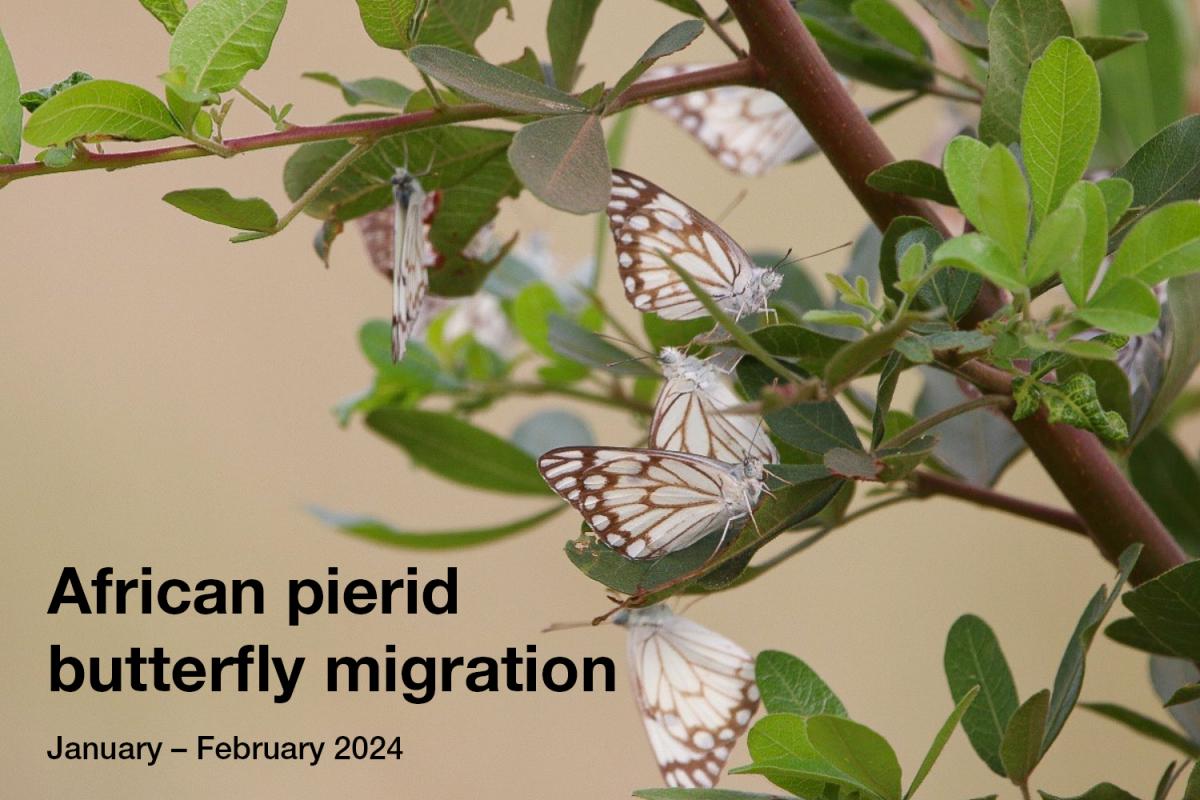

The Great migration of wildebeest, one of the seven natural wonders of the world that plays out every year in the month of July and August between Kenya and Tanzania. Wildlife and photography enthusiasts from around the world flock to Kenya to witness this wonder. Every year over 2 million wildebeest, accompanied by zebra’s and gazelles’s migrate from Serengeti in Tanzania to the Mara plains in Kenya. The prey-predator relationship that is uniquely intertwined between the migrating animals and predators such as lion, cheetah, leopard and Nile crocodiles adds to the entire spectacle.
Migration is a unique animal behaviour, where large numbers of a single species or related species multiply and travel from their niche habitats to other habitats in search of food, better environments and for specific reproductive needs. Migration has been widely observed in diverse groups of organisms such as birds, fishes, mammals, crustaceans, amphibians and insects.
Only few of these have been scientifically documented and only very few migrations like the Great migration of the wildebeest in Kenya and the Monarch butterfly migration in North America has gained awareness among the public. A trip to Masai mara to watch the spectacular migration is out of bounds for many people even in Kenya. A travel to America to watch the Monarch butterfly migration, will just remain a dream for many of us. However, a recent review on potential migration by butterflies alone, highlighted that nearly 600 species could be migrating across the globe. Most such migrating species in Africa, apart from few in South Africa go unnoticed and undocumented.
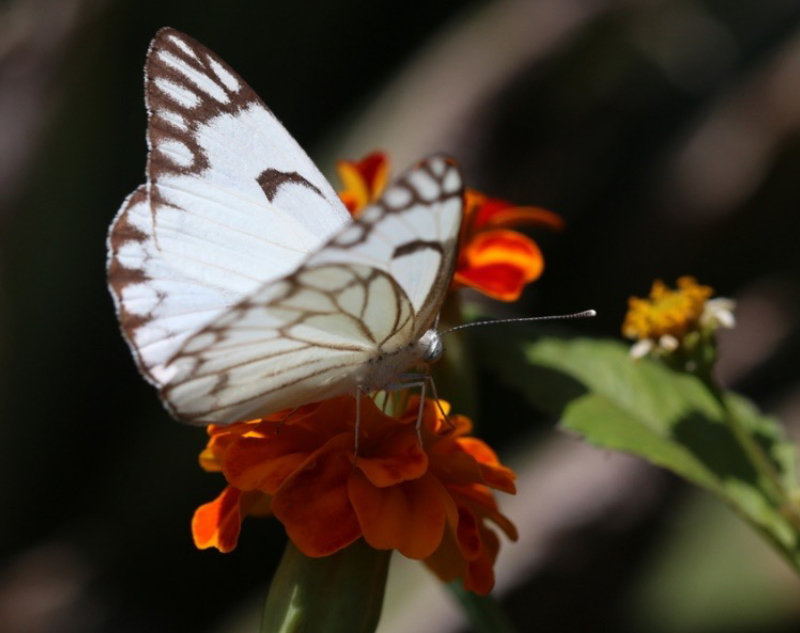
African pierid migration Jan-Feb 2024: Unusual El Nino rains in November 2023 – January 2024, has resulted in one of the most spectacular butterfly migrations I have seen in Nairobi, Kenya. I started observing flocks of Brown-veined white or Pioneer white butterflies, Belenois aurota (Pierinae: Pieridae: Lepidoptera) in the International Centre of Insect Physiology and Ecology (icipe) campus fluttering during mid-day, picking nectar from the beautiful garden in the campus. Their flights were directional and were impacted by wind. Thanks to iNaturalist and the experts in the network for the ID of these butterflies that I observed. A quick review of the available literatures on the Brown-veined white in Africa and its migratory behaviour indicated that these butterflies have been documented to migrate in large numbers from the West coast of South Africa to the East Coast. The larvae of Brown-veined white, feed on plants that belong to the genera Boscia, Maerua and Capparis of Family Capparaceae. Hence the adults and larvae of Brown-veined white are not pest of cultivated crops. Myths propagated around this unprecedent migration linking it to drought has no merit and substance. Hence, just enjoy the nature’s beautiful spectacle unfolding.
On Friday, coincidentally, two of my colleagues who were in the field in Narok and Kitui simultaneously messaged me on whatsapp, enquiring about the flock of Brown-veined white. Then, I realised that the migration is a nation-wide phenomenon and not restricted to Nairobi alone. Social media leads highlight that a similar migration is also happening in Tanzania. If you have also observed this migration in your place, please share details, photographs and location. Butterflies and many other swarming/migrating insects warm up their bodies with the sun and fly long distances, while over the evening until next day morning, they rest in specific vegetations commonly referred as "roosting”.
Spectacular roosting of migrating African pierids: Spectacular visuals of Monarch butterflies roosting in millions on pine and fir trees in specific roosting sites is a hallmark of the Monarch migration. I wondered if such roosting also happens with the Brown-veined white during its migration. Obviously, with all the disturbance in the Nairobi city, their roosting might not be anticipated in the city. Hence, I decided to search for their roosting in the Nairobi National Park over the weekend. Close to the main gate near human settlements, where pastures have been invaded by the Parthenium weed, the Brown-veined whites where preferably roosting on the invasive weed, but not in large groups. Do butterflies also seek nectar while roosting on a specific plant to satisfy their energy needs for survival and migration? If yes, how resourceful will be an invasive weed like Parthenium compared to other native and indigenous plants?
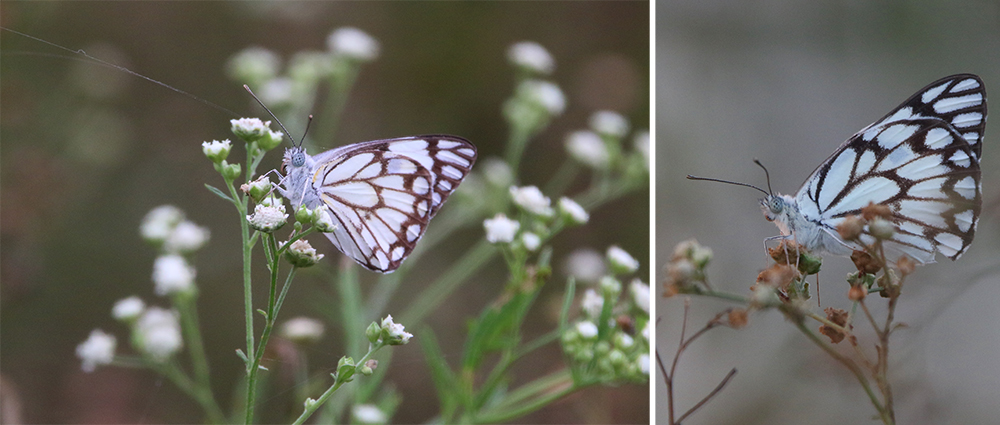
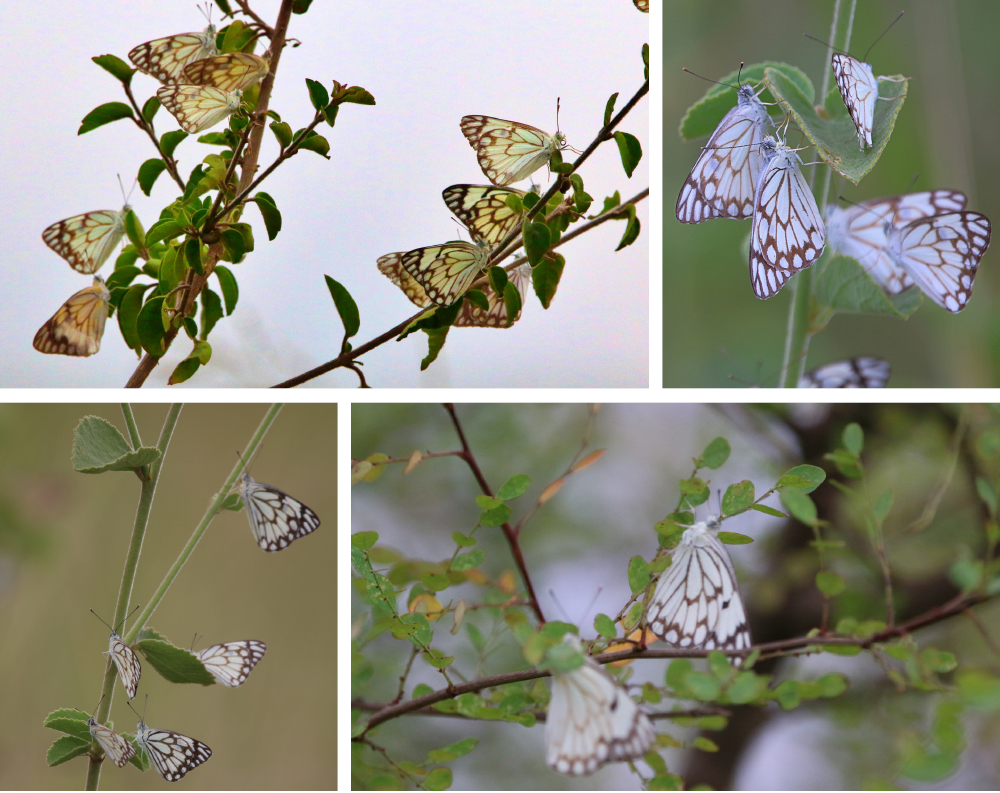
However, as I moved further into the Nairobi national park, within well grown vegetations, I could observed the extensive roosting of the Brown-veined whites on other plants belonging diverse families. The visuals of the aggregating, Brown-veined whites in large numbers was spectacular and breathtaking. The invasion of parthenium is not intense in these locations and they were not among the chosen plants from roosting. A detailed investigation on the specific choices of plants for the butterfly roosting will help in unravelling the migratory behaviour further.
Prey-Predator interaction: Further, as these butterflies migrate in large numbers, interesting interactions with predators such as birds and spiders do happen. This is comparable to the predation by lions, leopards, cheetah and crocodiles of the wildebeest and gazelles during the great migration, which spices up the spectacle to another level. In Botswana, birds such as Bee eaters (Merops sp.), Fork-Tailed Drongoes (Dicrurius adsimilis) and by Lilac-Breasted Rollers (Coracias caudata) are known to temporarily specialize predating on migrating African migrant, Catopsilia florella Fabricius. Although, I could not observe specific association of bird predators with the migrating butterflies in Nairobi National Park, such interactions cannot be ruled out. This will need to be investigated further in East Africa. One such prey-predator interaction that I observed in icipe, is that of a flower crab spider predating on Belenois aurota.
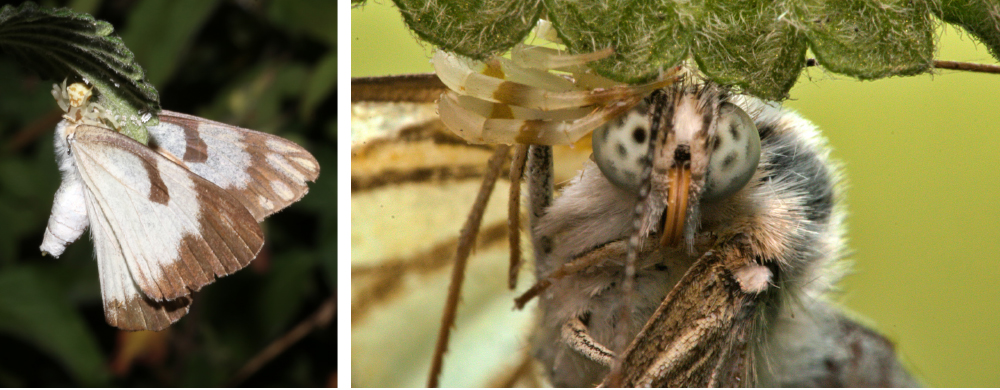
Need to conserve the natural heritage of Africa: Unique migratory phenomenon of both endemic butterflies such as the Brown-veined white, the African migrant and many other undocumented insects and bird species and the associated ecosystems and biological interactions are natural heritages of Africa. Such natural heritages need to be better understood and conserved engaging the communities associated with the heritages, biodiversity enthusiasts among citizens, researchers and policy makers. Recent advancements in citizen-science, morphological and molecular systematics and radioisotope-based investigations can go a long-way in identifying migrant insect species and unravelling their migratory pathways with precision. By doing so, we might well be in the cusp of establishing and characterising the Great migration of African Pierid butterflies and contribute to strengthening our wildlife tourism/Ecotourism sector which is already contributing 10% of the GDP and 7% of employment in East Africa.
Key references:
- Chowdhury, S., Fuller, R. A., Dingle, H., Chapman, J. W., & Zalucki, M. P. (2021). Migration in butterflies: a global overview. Biological Reviews, 96(4), 1462-1483.
- Chipps, A., & Underhill, L. G. (2023). Millions of Caper Whites Belenois aurota 100 km offshore of West Africa. Biodiversity Observations, 13, 189–191.
https://doi.org/10.15641/bo.1343 - Larsen, T. B. (1992). Temporary prey-specialization on migrant butterflies by bluecheeked bee-eaters. Entomologists’ Record and Journal of Variation, 104, 253-255.
Credits:
- Dr Sevgan Subramanian, Principal Scientist and Head, Environmental Health Theme, International Centre of Insect Physiology and Ecology, Kasarani, Nairobi.

